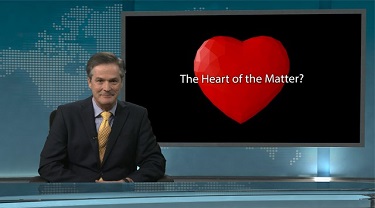Populism isn’t unique to America. In a world that, ten years on, is still dealing with post-recession chaos, populism is a common thread extending to every region and possibly every nation of the world. Even more troubling is the fact that by several measures, populism is gaining momentum long beyond the point that any normal economic cycle would have snuffed it out – especially in the world’s top economy. If the tide is ever to turn, it’ll probably happen first in the US. But is that even remotely possible?
Populism is a popular topic these days, and a number of serious papers and possible measures have been presented. Most look at the increasing share of the vote going to parties further from the centre of the political spectrum, in either direction. The figures, however derived, are almost universally agreed that political divergence has increased, irrespective of geography or the ideology of political incumbents.
There is less agreement on the causes of today’s populism. The knee-jerk reaction is to blame it on structural factors, and there is a long list of current candidates. But there’s little conclusion on which ones predominate. Economists point to the negative relationship between populist uprisings and employment – essentially saying that if enough people are gainfully employed, they don’t have time for uprisings and so on. Put another way, high unemployment breeds unrest, and vice versa.
In that case, what is America upset about? Aren’t they experiencing record-low unemployment rates? Officially, yes. Unofficially, not quite. For this point in the growth cycle, US labour force participation is far lower than normal, even adjusting for aging of the population. This is nothing new: analysts have been writing about it for years; as Fed Chair, Janet Yellen was not only concerned about it, but created a special measure of it; and I have certainly had a lot to say about the issue.
So, why yet another piece on this issue? Well for starters, it remains annoyingly unresolved. But I was also curious to see whether it had happened before at any point in recent history. Stretching back to the 1970s, we can respond with a definite no. In all prior periods of cyclical downturn, labour force participation has generally stayed the course. Sure, there are discouraged workers that temporarily drop out of the economy, but compared with today, prior reactions have been miniscule. A calculation of differences in the effective unemployment rate – the rate that includes discouraged labour force dropouts – stays within a relatively tight band around zero for most of the past 40 years. Post-2008, it marched steadily up to 1 percent, 2 percent, then 3 percent. It’s drifting downward now, thanks to nascent labour market improvement, but it still pegs the effective unemployment rate not at the official 3.7 per cent, but effectively at 6.1 per cent.
That’s a world of difference. It essentially says that there is enough labour in the US market to sustain economic growth at the current above-potential pace for just about two years – longer if growth settles down into a sustainable long-term rhythm. Cries of recession might be quite preliminary.
Given this market potential, is it possible that the populist tide will recede? Here, there are a few ‘ifs’. First, we need to hope that policy uncertainty, or for that matter, any other outside influence, won’t upset the growth applecart. Second, after a prolonged hibernation, an investment revival is needed. Third, we need to hope that protracted sub-par growth has not talked the broader economy into a low-growth stasis – a mindset that proves impossible to overcome.
Critical to seeing the US economy – and the broader world – through this malaise is a broader understanding of the current operation of the economic cycle. It’s not broken, as many seem to think; just exaggerated, by the forces of globalization and technology. If so, it suggests a very different approach to business strategy, policy and regular economic behaviour.
The bottom line?
The economy has heart issues. There seems to be little agreement on what the heart of our current difficulties is. And as such, we’re having a hard time knowing how to get it back into regular rhythm. In the process, the economy and politics seem to have become more heartless. What better time than Valentines Day to start getting it right? Happy Day!
This commentary is presented for informational purposes only. It’s not intended to be a comprehensive or detailed statement on any subject and no representations or warranties, express or implied, are made as to its accuracy, timeliness or completeness. Nothing in this commentary is intended to provide financial, legal, accounting or tax advice nor should it be relied upon. EDC nor the author is liable whatsoever for any loss or damage caused by, or resulting from, any use of or any inaccuracies, errors or omissions in the information provided.





